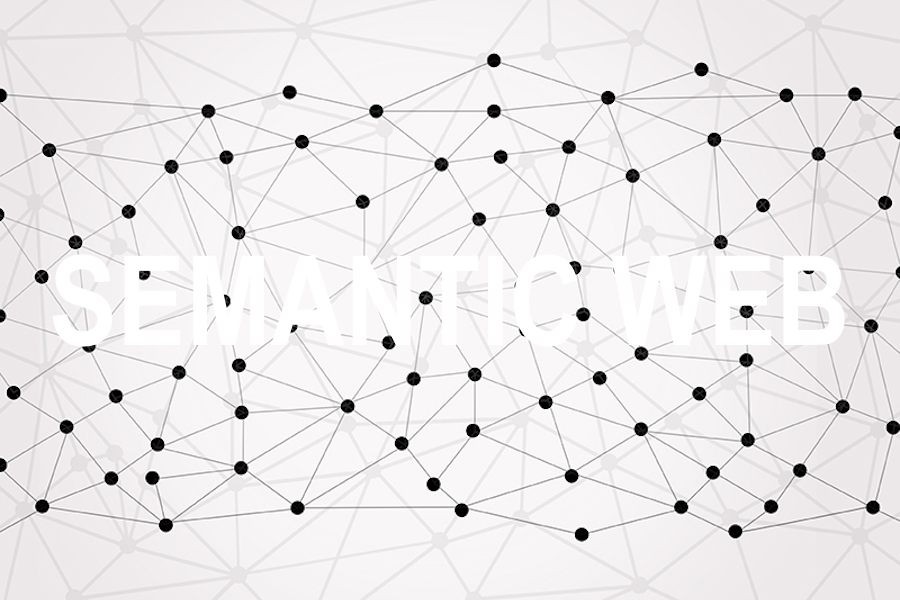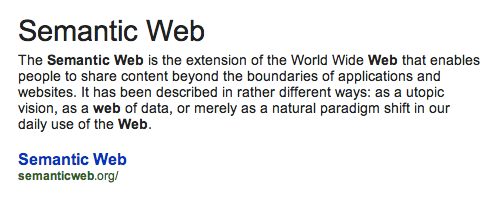
The Semantic Web has been a hotly debated topic for many years now.
The conversation has gained some momentum recently in how we frame issues like search, SEO, and linked data.
Semantic technologies have long been heralded as the best way to add linked data to your site.
But since the rise of AI, many are now asking, “Is the Semantic Web dead?”
In short, yes.
One article from Semantico even gave it a eulogy several years ago, indicating that it’s been in the process of dying for several years.
Of course, it’s not quite dead. Like a butterfly in a cocoon, it’s merely in the process of evolving into something better.
But why does this transition matter?
The Semantic Web was important to a lot of the ways we view data and handle data on our sites, especially in how they relate to search and SEO.
Without the Semantic Web, we wouldn’t have the Google we know today, for example.
But Google and other tech giants are now moving beyond semantic technology into the realm of AI and Machine Learning.
With that in mind, here’s what you should know about the “death” of the Semantic Web and what it means for you.
What Is the Semantic Web?
The Semantic Web was our first attempt at structuring and organization the data on our websites so that search engines like Google could easily read it.
As W3C defines it, the Semantic Web “provides a common framework that allows data to be shared across application, enterprise and community boundaries.”

The idea was that if everyone’s data could be organized semantically – logically – search would be a cinch.
In terms of search, the Semantic Web would use data to create associations of known entities through the “structured data” within the page markup.
But the Semantic Web was a bit tedious. It required users to manually tag every web page in order to fit into its system.
Much of the information we get from the Internet today is delivered in the form of HTML documents linked to each other through hyperlinks (this is the linked data mentioned earlier).
If users failed to connect this data (tag it) properly, it would fail.
Machines, too, have a hard time extracting meaning from the links without proper structure.
Machines also have trouble understanding intent, which is the foundation of search.
Semantic Web technology was the first attempt to determine intent by creating a database of information that all linked (and related to) each other.
It was far from perfect, but it worked for a time.
Unfortunately, with the rise of Machine Learning, deep learning and other forms of AI, the Semantic Web has become much less capable by comparison.
The Role of Machine Learning and AI in Search
Semantic technology is transitioning to AI.
In his article, “The Semantic Web is Dead, Long Live the Semantic Web,” Denny Britz argues that the Semantic Web has been replaced by the “API economy.”
“APIs are proliferating,” he says.
He also notes that the biggest reason that the Semantic Web is failing where other, smarter technologies are succeeding is that semantic languages were hard to use.
“Semantic Web technologies were complex and opaque, made by academics for academics,” he adds. “[They were] not accessible to many developers, and not scalable to industrial workloads.”
Diffbot’s Knowledge Graph, for instance, can now extract meaningful information from the web with high levels of accuracy.
The graph uses a combination of Machine Learning and probabilistic techniques, combined with lots of data.
In essence, AI and Machine Learning are now capable of doing everything that the Semantic Web originally aspired.
And they’ve made the old ways somewhat irrelevant.

What This Means for Structured Data
So what does this all mean for you, the average web data user?
For one, it means that your Google search results are going to be much more accurate.
For another, it means that the way you structure your site’s data will significantly impact its rankings on Google and how well Google’s AI will be able to read that data.
Using Schema Markup – a type of semantic vocabulary – for example, will be important to SEO.
But it also means that you will need to use more powerful scraping tools if you want to collect data from other sources around the web.
In his nearly decade-old article, “5 Problems of the Semantic Web,” James Simmons describes one of biggest issues with the Semantic Web being a lack of bottom-up approach to web scraping.
He says that in the future “content scrapers of the Semantic Web and beyond will be equipped with the ability to read the content within Web documents and feeds.”
This technology, he adds, “Does not yet fully exist.”
Except that now it does.
With AI and Machine Learning, scraping technologies have improved to be able to process natural language as well as read structured (and unstructured) data in a highly accessible way.
The programming languages we use now are able to cut through the complexities of web data so that any site – regardless of size or number of HTML documents – can use data to grow.
In other words, the death of the Semantic Web is a very, very good thing for business.
Conclusion
While the Semantic Web deserves a lot of praise for being the first of its kind in the world, there comes a time for every technology to evolve.
It might be easier to say that the Semantic Web is transitioning, rather than dying, but the reality is that AI and Machine Learning are outpacing it at a significant rate.
The way that new data technologies are growing is a sign of things to come.
But this is good news for sites that want to use data to outpace the competition. With AI and Machine Learning, it’s possible to gather data from any site at any time.
You don’t need some sort of “futuristic web scraper” because the technology already exists today.
You can get the data you need, the way you need it, from the sources you need it with very minimal effort.
If the Semantic Web has to die for this to happen, it’s a death we won’t shed any tears over.
You must be logged in to post a comment.